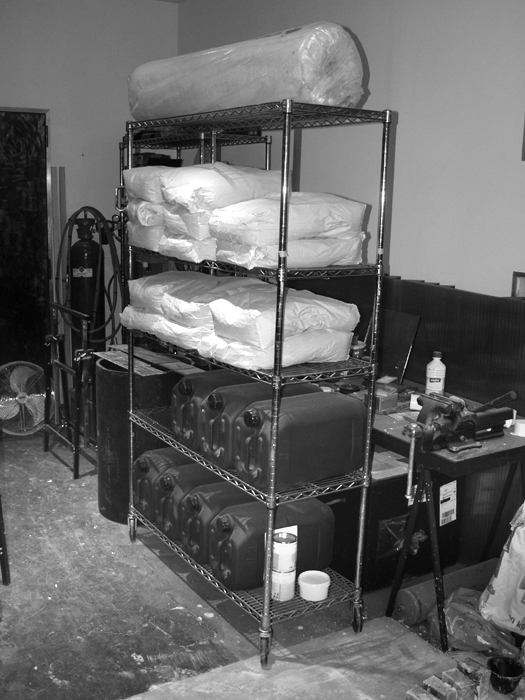Rerurn to Romy the Cat's Site
In the Forum: Horn-Loaded Speakers
In the Thread: Jessie Dazzle Project
Post Subject: Materials : 40Hz hornPosted by jessie.dazzle on: 4/23/2009
fiogf49gjkf0d
Lbiefferies7 wrote :
"... I am interested in knowing the material that you made these out of... I've read you mention doing patents, so if "mum's the word," I can certainly respect that..."
No problem... If ever I were to make horns for sale to others, I would definitely not make them the way I've made these or my other horns. The processes used here are fine for making one set, or a functioning prototype. Doing it this way as a commercial venture would require that one use 3rd world labor, and even then, I would still use other processes.
The product used for the 40Hz horn is made in Germany; it is marketed in France under the name "Plasticrete". There is surprisingly little information out there on this stuff. I've done internet research for the equivalent in the US, but came up with zero. It was once used in, among other places, the auto industry, to make quick molds of clay prototype models. There are people in Detroit who must know where to get it.
It consists of a liquid used to laminate fibers.
The fibers are soaked in an acrylic liquid (looks sort of like thinned out wood glue), mixed with an acrylic powder (looks like plaster). The ratio is 1 part liquid to 2 parts powder (a drill with a mixing attachment is about the only way to get it properly mixed). The resulting liquid is of a similar viscosity and appearance to the batter used to make crepes over here. The soaked fibers are then placed on the forming tool and left for 3 hours, after which point the lamination is fully cured; hard but not brittle.
I would guess that about half of Las Vegas is made of this stuff, so there must be an equivalent in the US. Over here it is expensive. One mid-bass horn costs me 2000€ in materials (just the bare horn, without driver, chassis, rear chamber, etc).

Above : On the shelves are most of the materials that go into one 40Hz horn. On the top shelf is a roll of very thick chopped strand fiberglass mat, which was developed specifically for this process (one horn takes more than just this one 60m roll)... When rolled up, the fibers are compressed, when unrolled they expand and soak up a LOT of the liquid. The resulting lamination is extremely heavy. One advantage of the product is an absence of shrinkage.
Some may be wondering how I know that one horn weighs around 900 lbs... I know this because I pay for the materials by weight, and I waste almost nothing. Yes that shelving unit is overloaded; the wheels are flat-spotted and will not roll. The whole thing just started swaying why I tried.
To the left of the shelf is a large sewer pipe that will serve to make the adjustable rear chambers (see upper-bass horn a couple pages back).
"... Is there something I should know before I cast my upperbass horns?..."
I assume you mean with regard to matarials (?). From what material will you make them?
"...Aesthetics wise, it looks like you were the designer of the Ariel Atom or Deronda or Caparo T1..."
Well... It would be "off-thread" to go into that; I already feel guilt for having posted photos of my cats!
jd*
Rerurn to Romy the Cat's Site